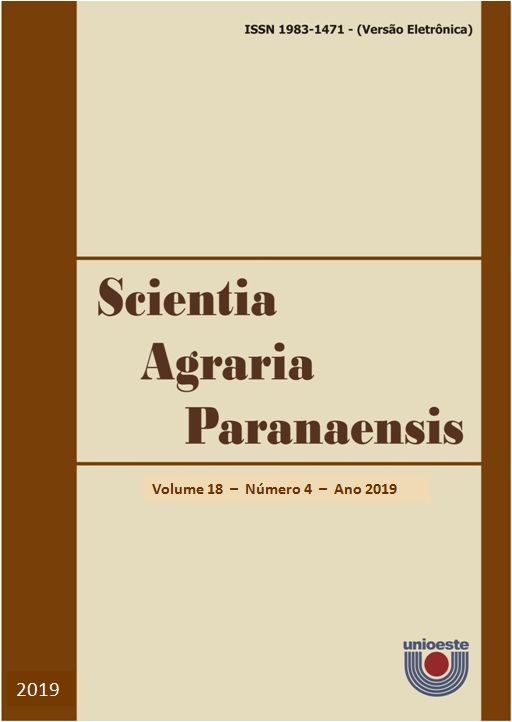Available soil water upper limit by modeling and direct determination in a greenhouse
DOI:
https://doi.org/10.18188/sap.v18i4.22643
Agências de fomento
Fundação de Amparo à Pesquisa do Estado de Minas Gerais (FAPEMIG), Coordenação de Aperfeiçoamento de Pessoal de Nível Superior (CAPES), Universidade Federal de São João Del Rei - Campus Sete Lagoas, Programa de Pós-Graduação em Ciências Agrárias (PPGCA)
Resumo
Pot capacity (PC) is a direct method of determining field capacity (FC) for experiments with plantings in pots. The objective of this study was to evaluate different laboratory methods to determine field capacity and compare them with the pot capacity method. The experimental design was completely randomized (CRD), with nine treatments (methods of obtaining FC) and four replications, totaling 36 experimental plots. The mean values of moisture contents in the FC of the nine methods were compared, being eight empirically obtained and one directly in the greenhouse, defined as a control treatment (PC). The relative accuracy (RA) for all treatments was determined in relation to the control treatment. The estimation of the upper limit of available water in the soil varies depending on the method, and a decreasing order of moisture levels can be observed at FC: FC-Lab4pts > FC-Labip > FC-Lab8pts > PC > FC-Lab6pts > FC-6KPa > FC-LabSWRC > FC-10KPa > FC-33KPa. The treatment FC-Lab6pts has the relative accuracy closest to 100% and can be a practical alternative to PC. The use of 4, 6, 8 or 10 points for modeling the SWRC does not interfere with the quality of the FC estimated by the Dexter inflection point method, which is much more efficient for experiments of this nature. The use of potentials -10 kPa and -33 kPa is not adequate to estimate FC in tests with pots in a greenhouse.Downloads
Publicado
15-12-2019
Como Citar
CAMPOS, M. P.; RUFINI, J. C. M.; SILVA, B. M.; SOUSA, S. S. de; MAGALHÃES, D. S.; CAMPOS, P. H. P. Available soil water upper limit by modeling and direct determination in a greenhouse. Scientia Agraria Paranaensis, [S. l.], p. 357–361, 2019. DOI: 10.18188/sap.v18i4.22643. Disponível em: https://e-revista.unioeste.br/index.php/scientiaagraria/article/view/22643. Acesso em: 24 abr. 2024.
Edição
Seção
Artigos Científicos
Licença
Aviso de Direito Autoral Creative Commons
Política para Periódicos de Acesso Livre
Autores que publicam nesta revista concordam com os seguintes termos:
1. Autores mantém os direitos autorais e concedem à revista o direito de primeira publicação, com o trabalho simultaneamente licenciado sob a Licença Creative Commons Attribution que permite o compartilhamento do trabalho com reconhecimento da autoria e publicação inicial nesta revista.2. Autores têm autorização para assumir contratos adicionais separadamente, para distribuição não-exclusiva da versão do trabalho publicada nesta revista (ex.: publicar em repositório institucional ou como capítulo de livro), com reconhecimento de autoria e publicação inicial nesta revista.
3. Autores têm permissão e são estimulados a publicar e distribuir seu trabalho online (ex.: em repositórios institucionais ou na sua página pessoal) a qualquer ponto antes ou durante o processo editorial, já que isso pode gerar alterações produtivas, bem como aumentar o impacto e a citação do trabalho publicado (Veja O Efeito do Acesso Livre).
Licença Creative Commons
Esta obra está licenciada com uma Licença Creative Commons Atribuição-NãoComercial-CompartilhaIgual 4.0 Internacional, o que permite compartilhar, copiar, distribuir, exibir, reproduzir, a totalidade ou partes desde que não tenha objetivo comercial e sejam citados os autores e a fonte.


